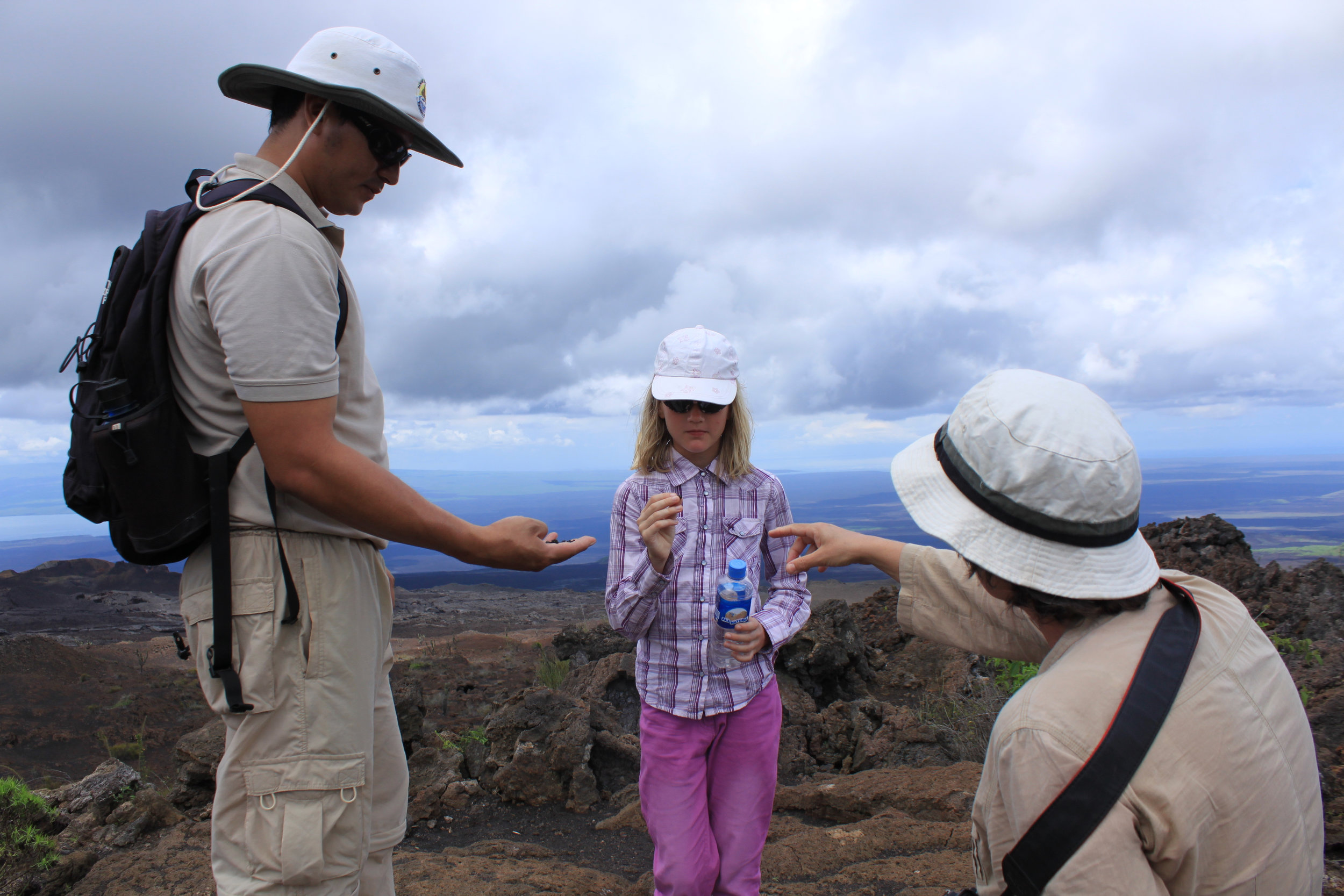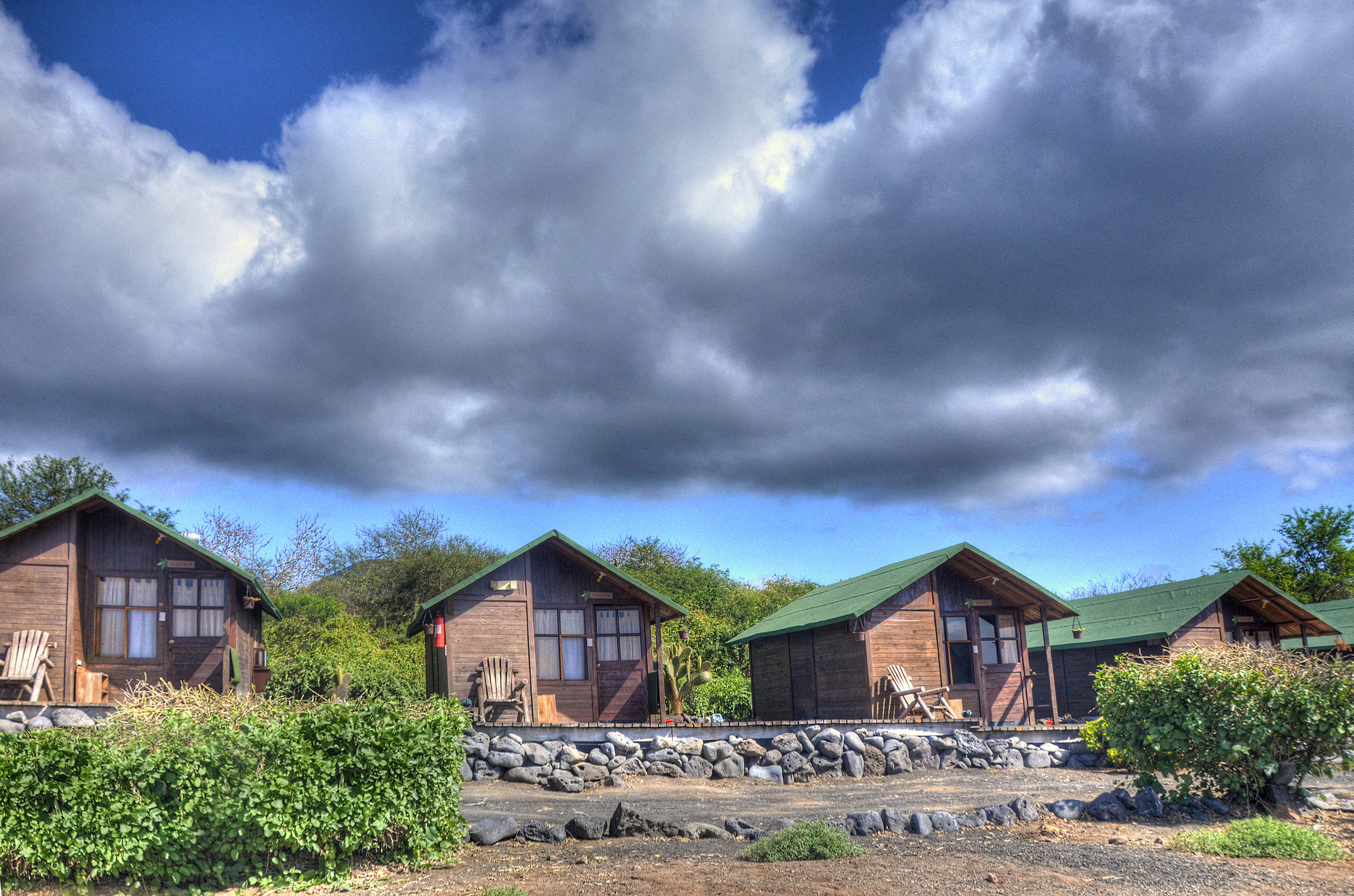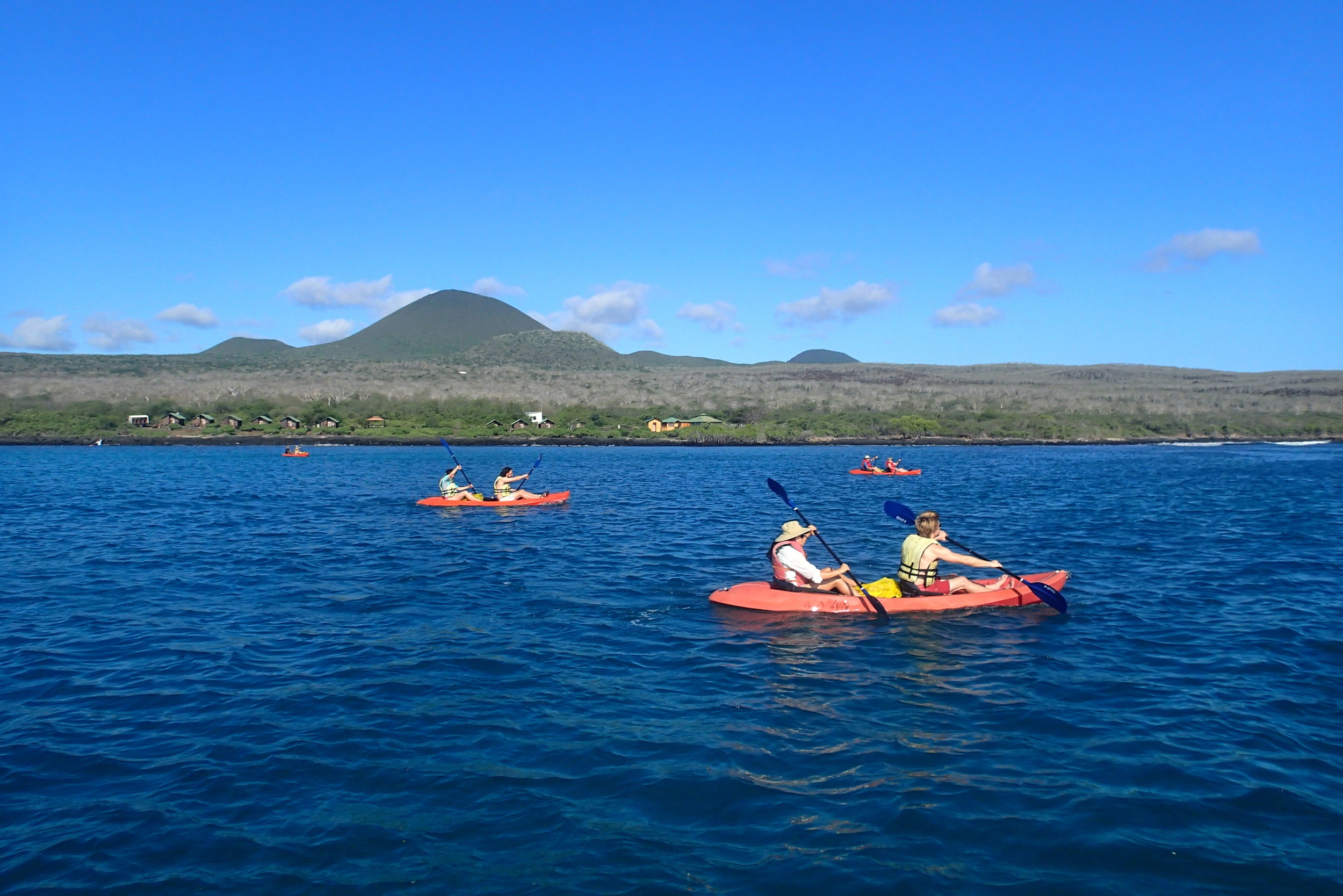Experience island beauty, The Galapagos old way of life & out-of-this-world wildlife in one of the few World Heritage Marine Reserves
Away from the tourist crowds, support Floreana locals and enjoy something out of the ordinary in the first community-based tourism initiative in the Galapagos Islands supported by Ecuadorian international award winners for community tourism.
A visit to this peaceful island, whose history and wildlife abounds with extraordinary characters, is really something special. It’s about slow tourism, about fully experiencing this magical world of mystical creatures, relaxing, meeting the local people and helping the small community develop sustainably.
This fabulous World Heritage site, one of the most famous places on the planet, is where time warp meets reality. Here you'll find not only spectacular wildlife, with a chance to get closer to wild animals than anywhere else on earth, but also a warm, slow-going atmosphere long disappeared from most places worldwide.There is simply nowhere else like it.
Be an Earth Changer:
Visit & stay to help Floreana Island develop sustainably
The 10 independent cabins are each equipped with 2 twin beds (bunk beds also available). All rooms contain air conditioning, reading lamps, clock radio, hot water, hair dryer, bed side tables, individual safe deposit boxes and Wi-Fi!
Each ocean front cabin has its own bathroom, front porch, a reading and shady area to provide privacy and enjoyment of the outdoors. The lodge also has a laundry and snack bar and a common area where guests can relax together and savour a welcome drink while enjoying the striking Galapagos sunsets. More details below.
The Places
Floreana is the smallest of the inhabited islands in the Galapagos archipelago; found one degree south of the equator and approximately 1000 kilometres off mainland Ecuador. It was the first Galapagos Island inhabited, due to its natural fresh water spring, cave shelter and local food sources providing the most beneficial stop in the archipelago for passing whalers, a pirates’ lair, and a fascinating natural and social heritage.
Naturalist Charles Darwin visited in 1835, two years after the first significant settlement was established. It was here, at Post Office Bay, where seafarers left messages for passing ships to forward on and tourists still continue the tradition to this day, the Acting Governor of Galapagos told Darwin he could tell from which island a tortoise came by the shape of its shell, helping Darwin form his theory of natural selection, and Floreana’s consequent popularity with tourists following in his footsteps.
Floreana’s extinct volcano lava base is in evidence around the coast, from volcanic cones providing some of the world’s best and unique diving experiences, to olivine crystal beaches and rocky shores, providing habitats to remarkable and highly adapted endemic and indigenous wildlife.
However, in the Galapagos as a whole, tourists are rarely offered insight into the real community, culture and conservation. Whilst Floreana offers the visitor a whole host of activities, biodiversity and geological interest, to stay on Floreana is rare and the island’s small resident population have not been able to enjoy the passing-through tourism’s benefits.
This is now changing with award-winning Ecuadorian responsible tourism pioneer Tropic announcing in 2014 the first community-based tourism initiative in the Galapagos. The local Floreana community approached Tropic due to their unparalleled experience in developing the Huaorani Ecolodge and its model of community-based sustainable tourism, to work together to protect the island’s resources and life style using tourism as a tool without it changing the island’s character, unlike elsewhere in the Galapagos.
Tropic has been working in the Galapagos for two decades, promoting sustainable and social responsible tourism, working with visitors and local people to guarantee the islands’ precious ecosystem stays intact, and to make sure local communities receive benefits from the tourism they help to make possible.
Relaxing slow tourism…
Accommodation: Guests stay at the Floreana Cruz family-owned Floreana Lava Lodge ocean-side cabins located on one of the best sites and most secluded bays.
Accommodating a maximum 30 guests (Floreana has so far avoided large hotels), it’s just 5 minutes’ walk from the centre of the main island village, Puerto Velasco Ibarra.
The comfortable lodge offers top class service and the best of friendly local hospitality, built on the black lava sands at the ocean's edge, just steps from the "loberia" (sea lion breeding ground) where visitors can watch the island’s famous sea lions in natural surroundings.
Wildlife includes Darwin's finches, frigate birds, sea lions, Blue Footed Boobies and the Galapagos Giant Tortoises, iguana and marine iguana, with the bonus of the underwater world while snorkelling such as manta rays, sharks, sea turtles and watch for dolphins and whales!
Activities: Kayaks, snorkel gear and Stand Up Paddle boards are available for guests use. You may also enjoy hiking up the (dormant) spectacular volcanoes and into wetlands rich with wildlife, biking, photography and usually spectacular star-gazing!
Activities are limited to daytime hours, between 6am and 6pm, and a naturalist guide / park ranger must accompany visitors when in Galapagos National Park designated areas (97% of The Galapagos Islands).
This trip to Floreana is all about meeting the local people, relaxing and, in the process, helping this small community survive intact while protecting this precious and unique environment.
The People
Floreana has the most intriguing social history of the Galapagos Islands. Early European expatriate settlers in the 1930s included a German vegetarian nudist couple, the Wittmer family and a baroness with three lovers who wanted to rule the island and turn it into an exclusive resort.
No one truly knows what happened, but a series of unsolved disappearances and deaths (including possible murder) in the 1930s brought mystery to the island, made into a film in 2013, The Galapagos Affair. After international interest died down, the Wittmer family lived on and remain on the island, and the island returned to quiet anonymity.
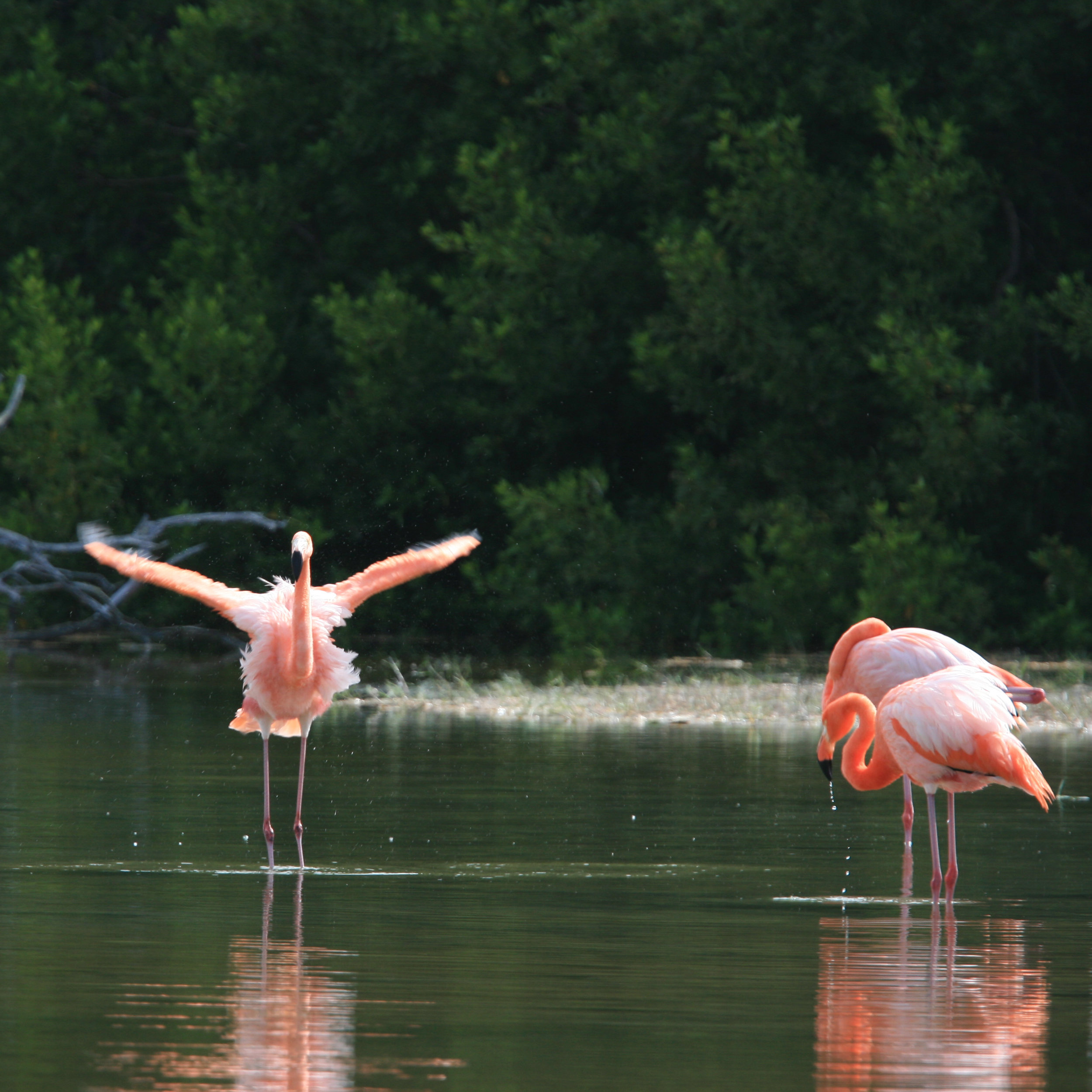

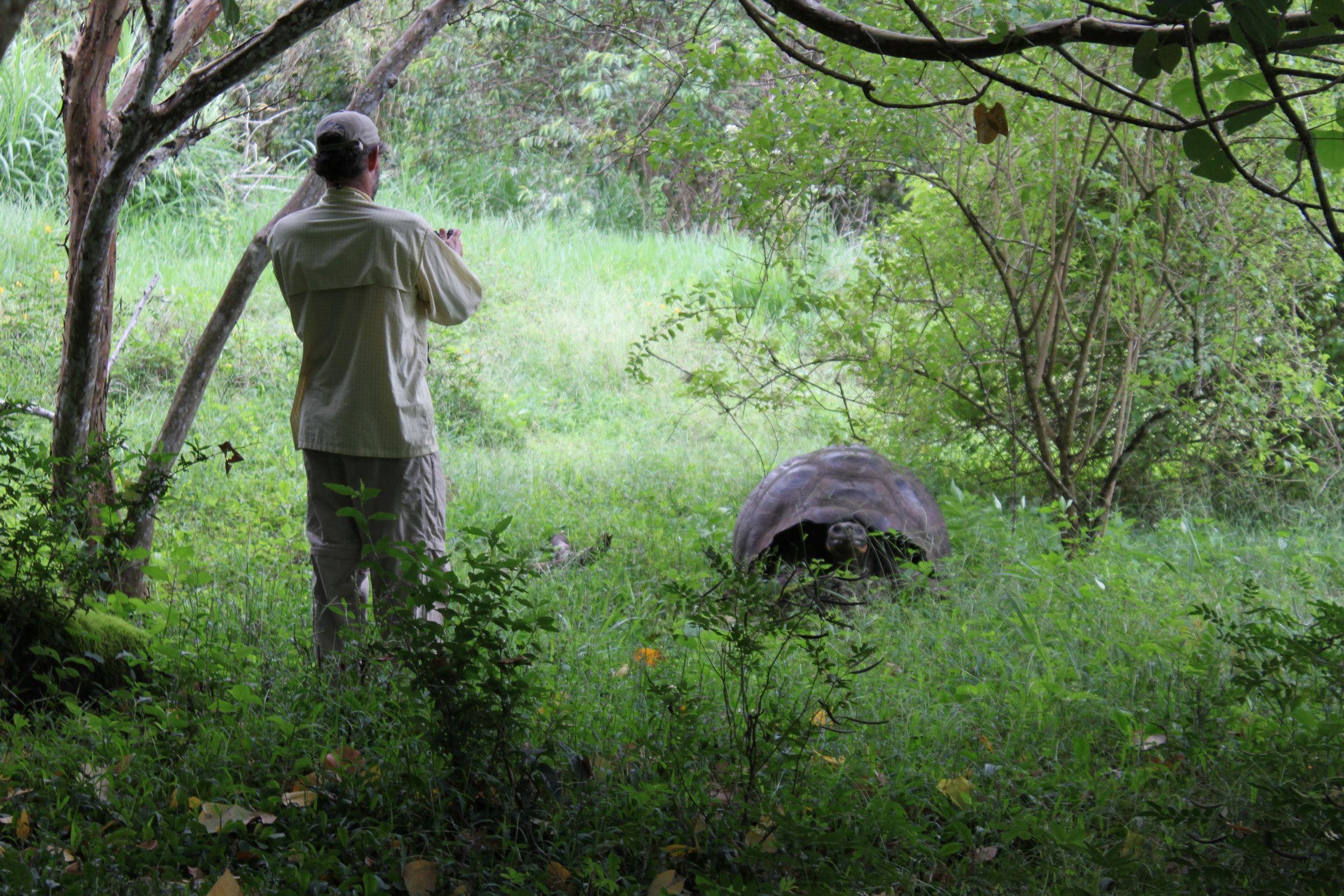
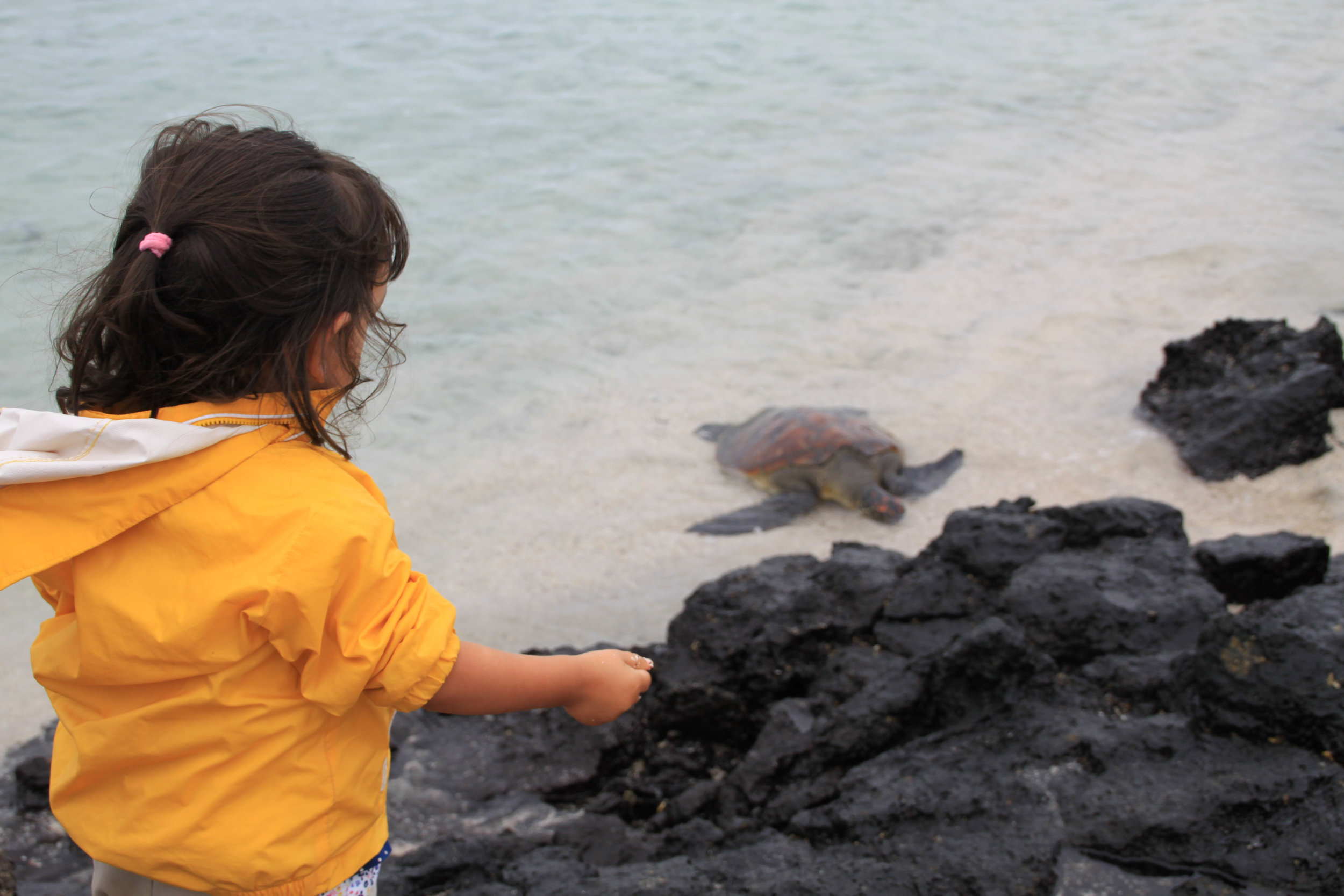

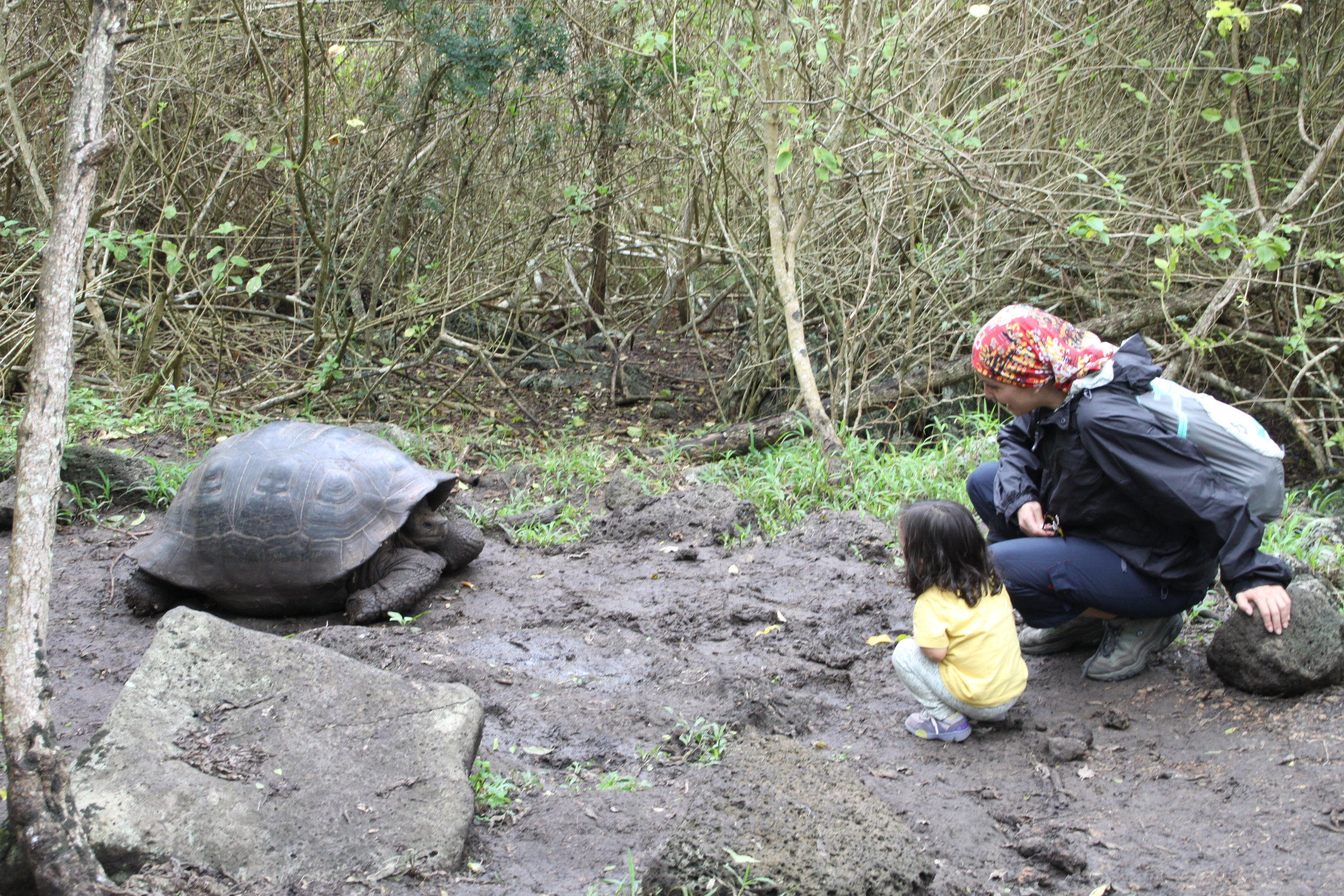
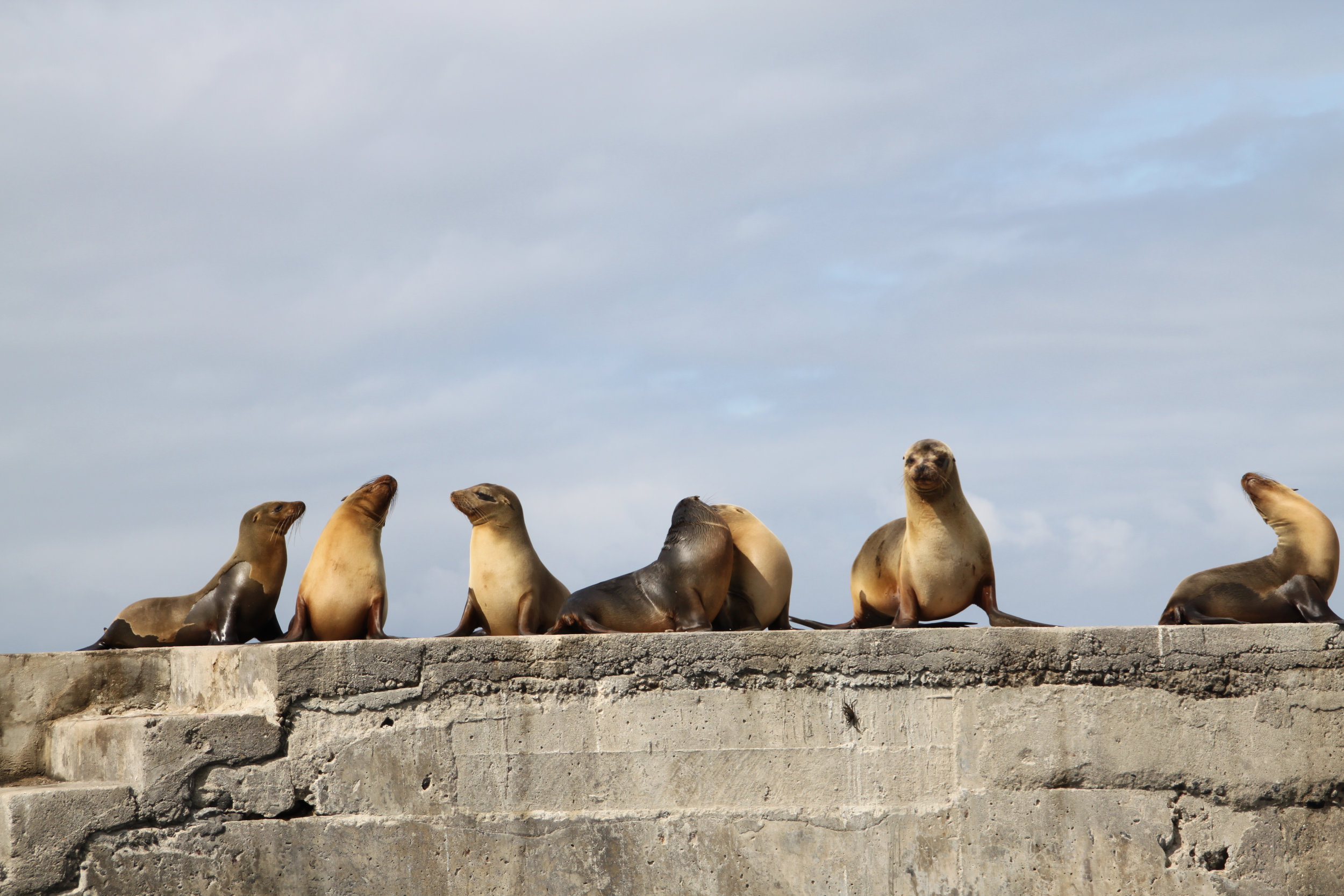
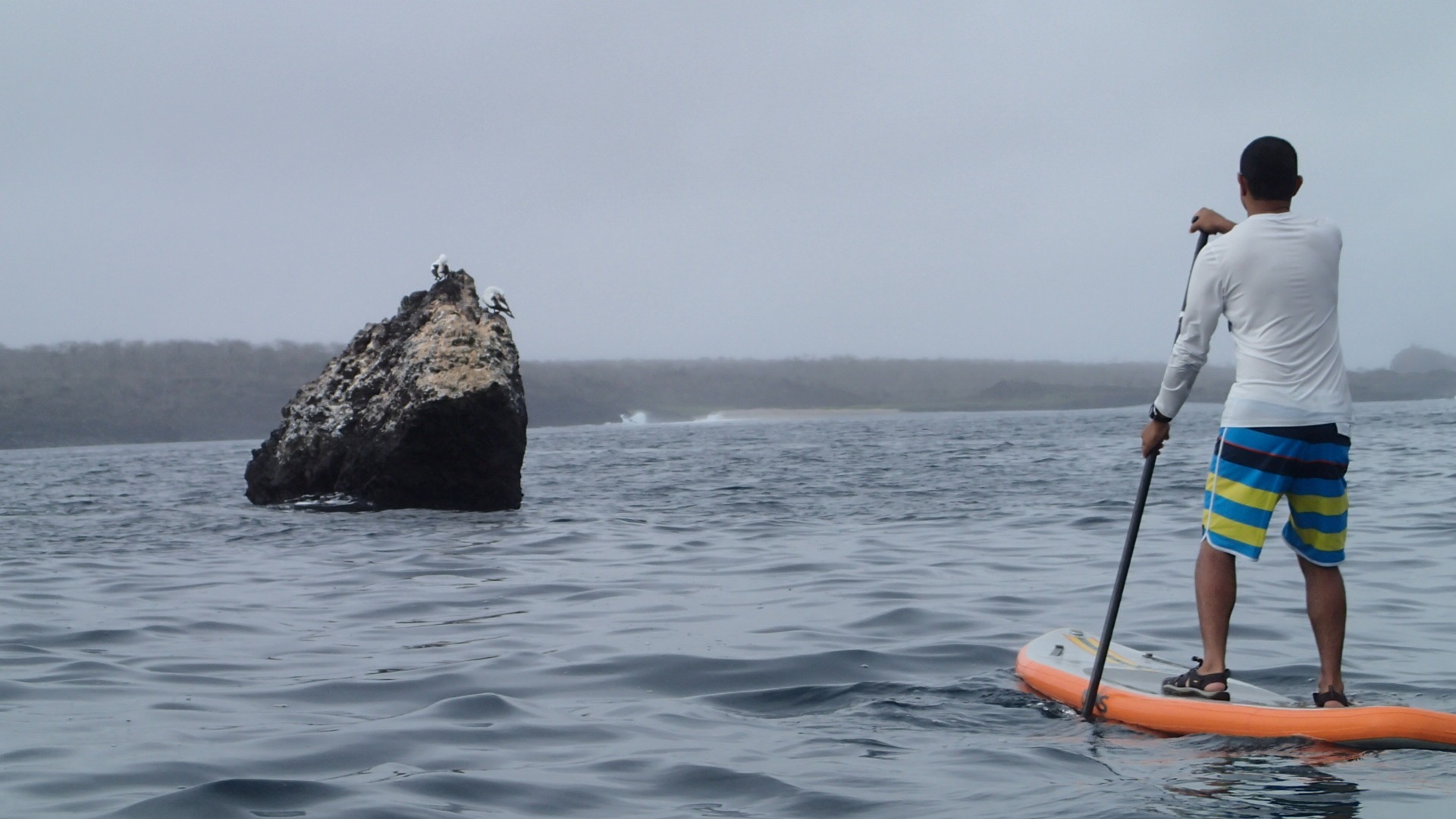

The National Park Service, established in 1959, began operations in 1968, bringing its first rangers in 1971 and organised tourism from the 70s, with evolving government regulations intended to annually limit the number of tourists, durations on ships, landings, manage their movements with National Park guides, and accrue entrance fees from the Galapagos National Park, which makes up 97% of The Galapagos Islands (the remaining 3% being inhabited areas of Santa Cruz, San Cristóbal, Isabela, Floreana and tiny Baltra Islands, the former three receiving most tourism).
However, annual tourist visitation to the Islands now tops 200,000, with up to three airlines twice a day bringing passengers to the Galapagos’ two airports, plus cruise arrivals, dwarfing the archipelago’s total resident population which has increased from 4000 in the early 70s to about 30,000 today.
Despite intended controls, in 2007 Galapagos (designated the first UNESCO World Heritage site in 1978) was added to the List of World Heritage Sites in Danger, due to the fast pace of human development, trade, and its biodiversity attracting tourism in ever-increasing numbers, negatively impacting the fragile environment with consequent introduction of invasive species to the islands. What might appear a boom for local economies is seeing the old Galapagos way of life, culture and community disappearing. Controls reinforced, UNESCO removed it from the 'In Danger' list in 2010, though the IUCN said work still remained.
“Since tourists are a source of income, and a very good one, there will always be pressure to increase their numbers. But there comes a point when the wildlife and the environment begin to suffer, and the tourists destroy the very thing that attracted them in the first place.”
Floreana’s limited natural water, energy, employment and infrastructure have kept the local population low to just 150, mostly subsistence farmers. Consequently, this peaceful island is the least developed and most natural of the four inhabited islands with descendants of the original settlers still living here, a real advantage for the visitor, and a resident population with a strong sense of community determined to learn from the experiences of other more popular Galapagos destinations and retain the Floreana environment and way of life.
Undertake this exclusive community-based tourism with Tropic and the money stays with the people who actually live on Floreana who, best of all, you’ll meet - the real guardians of the Galapagos.
The Purpose
Tropic aims to protect Floreana Island’s resources and lifestyle by using tourism as a tool while not letting it change the island’s character.
In the past, increasing and often exclusive premium (non-Ecuadorian) cruise-based tourism, and the imports it brings, has meant a leap in the number of alien species arriving (such as cats, dogs, pigs, goats, cattle) and invasive plant species, with their consequent negative environmental impacts: Native crop and vegetation devastation and habitat degradation, resulting in the gravest danger to the fragile ecosystems which have evolved over millions of years in natural isolation. Boats’ litter or fuel pollution washes ashore, killing wildlife and affecting fragile breeding grounds such as turtle nesting sites; food supplies are decimated; over- and illegal fishing leads to drastic decrease in catch volumes and fishermen’s livelihoods; and predation of young and eggs threaten protected species such as the Marine Iguana and Floreana Mockingbird, or the now-extinct Floreana Galapagos Tortoise, historically taken in droves by seafarers to keep alive on board for months for fresh meat, oil and water.
As a result, in 2009 the Galapagos Conservancy found that Floreana had the “highest level of species loss of any island in Galapagos”. With biodiversity and the cultural heritage of Darwin being Floreana’s magnet, steps to conserve it and minimise negative impacts are priority.
As every island’s ecosystem differs, their issues cannot be treated the same. Only in relative recent history did Floreana-specific conservation efforts start, with control of goats, donkeys and feral cattle leading to a regeneration of native vegetation and significant increases in all critically endangered plant species in 2006. Internationally managed conservation programs have supported specific initiatives, such as Floreana Mockingbird conservation, but these do not help promote local awareness of issues, and detach locals’ responsibility for the environment in which they live. Local people have not historically been involved in determining local priorities.
Socially, the negative impacts of tourism have not been minimised through volume control and have not engendered respect between tourists and Floreana islander hosts, proud of their home. A key and increasing requirement for Floreana in the last 10 years has thus been to foster and empower local support and responsibility, the Island not only being their home but also vitally the land they live off.
For Floreana, with much negative but little positive benefit of tourism, taking a long-term, local, environmental choice that benefits locals over short term profit tourism has to be priority for tourism for it to be sustainable.
Project Floreana (2012) has been a 5-year initiative to begin the process of restoring Floreana Island’s ecosystems to their earlier, more natural state more similar to that which Charles Darwin would have observed on his voyage to Galapagos in 1835, through a combination of community-based conservation and adaptive management to control invasive species and re-establish locally-extinct species. Implemented jointly by the Charles Darwin Foundation (CDF), the Galapagos National Park Service (GNPS), and local residents, the project has aimed, for the first time in Galapagos, to directly involve a community in all phases of the conservation program, linking conservation goals with local benefits.
A key priority now for Floreana is one of building confidence in tourism as a positive experience and providing more enjoyable experiences for all.
Historically, tourists may have had a great trip but with little connection with the community and have left none the wiser about the local cultural, social and environmental issues and with little benefit going to support the island's issues and people.
“Galapagos Islands are a world apart, a must-visit for every adventurous traveller, for everyone who prizes a very special place where people and animals can live together in peace.”
Gallery
Floreana Lava Lodge Options & Rates
Getting There:
Once in Ecuador, to reach Floreana you need to fly to Baltra Island airport in the Galapagos from from the capital, Quito (2 hours 15) or from the coastal city of Guayaquil, the same flight’s (1 hour) stopping point (1.5 hours).
From the small airport island of Baltra, you will probably already get your first sightings of Galapagos wildlife! A bus will take you from the airport a short hop to the Itabaca Channel to board a ferry to Santa Cruz Island. From there, it’s a two hour journey, passing through the arid northern zone of Santa Cruz Island, up to the highlands and then down through the agricultural zone and into the town of Puerto Ayora, the biggest town and port of the Galapagos. From the port, it’s a 2-3 hour speedboat trip to Floreana. (Tropic can help with your whole itinerary to Floreana and The Galapagos including visiting on multiple islands).
Price: 3 days/2 nts, shared departures Wednesdays and Sundays, min 2 people $875
Maximum 15 people (double and triple accommodation). Private departures available.
Children under 10 years 25% discount. Children under 2 years old free.
Included: Speed boat rides between islands, Double Accommodation, Meals as per itinerary
All means of land and sea transportation described in itinerary, transfers and guided activities.
The public speedboat times (please reconfirm time when booking) are:
From Santa Cruz to Floreana: Departing time between 7h30 to 8h00
From Floreana to Santa Cruz: Departing time between 14h30 to 15h00
The public price is $45 per person/per way. (Subject to change according to the provider).
Please consider:
- You will have to be at the pier, 30 minutes prior to departure
- On arrival in Floreana, you will have to take a water-taxi that will take you and your luggage from the speedboat to the pier. The cost for it is $1 dollar per way/per person
Terms & Conditions: 20% deposit of total amount payable on confirmation. Full payment required 60 days prior to departure. If balance not paid in full in time, bookings may be cancelled, deposit retained and cancellation charges applied. Cancellation fees: More than 120 days prior to arrival, deposit forfeited; 59 or less days prior to arrival, 100% of the full cost.
Awards & Accreditations
In the last decade Tropic has received more awards than any other company in Ecuador:
2015 Winner, Engaging Communities, National Geographic World Legacy Awards
2013 Travel One Sustainability Award Winner, Responsible Tourism Showcase, Educational Travel.
2012 Commended for Sustainability, Latin America Travel Association
2010 Highly Commended Accommodation for Local Communities, Virgin Holidays Responsible Travel Award
Best Company in Innovation, Latin America Travel Association (LATA)
Trips of a lifetime, Travel & Leisure
2009 Highly Commended Operator for Cultural Engagement, Virgin Holidays Responsible Travel Award
Best Adventure Travel Companies on Earth, National Geographic Adventures
Best Sustainable Tourism Project, Latin America Travel Association
2008 Best Sustainable Tourism Project, LATA



